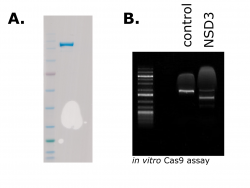Screening Compounds of Interest against USP5 Zf-UBD by SPR #2
I used a surface plasmon resonance assay to determine the binding affinities of hit compounds that were identified in 19F NMR spectroscopy screens against the zinc finger ubiquitin binding domain of USP5. To see how these assays work, check out some of my previous posts! You can see details of the SPR experiment on Zenodo. Read More …

